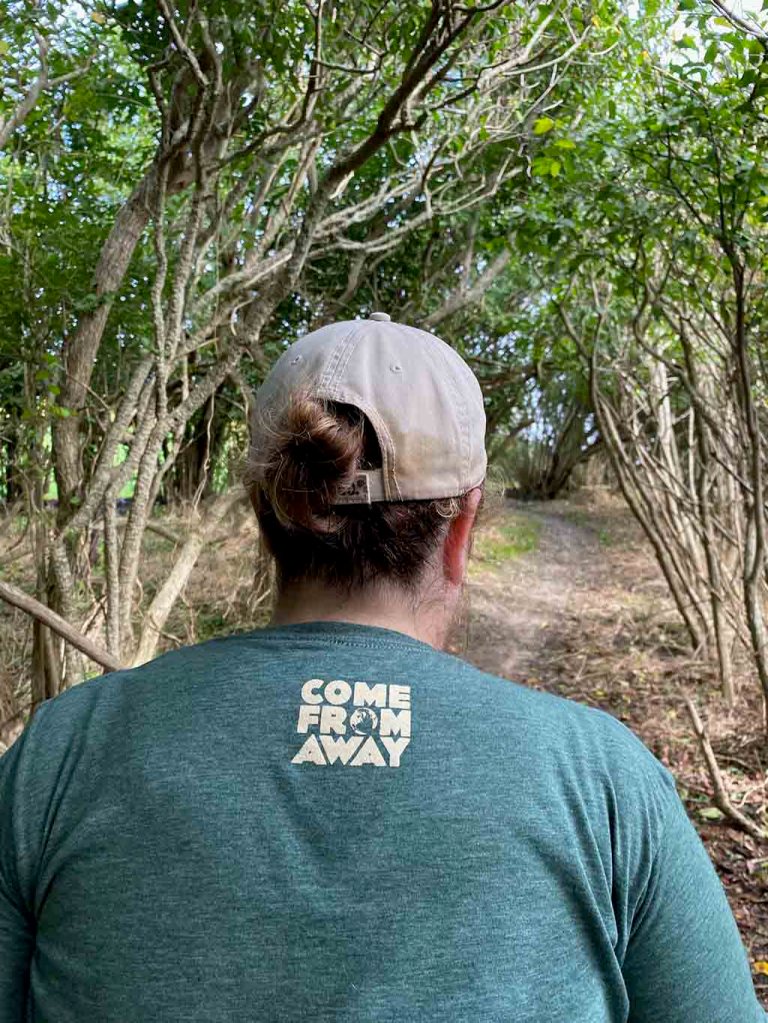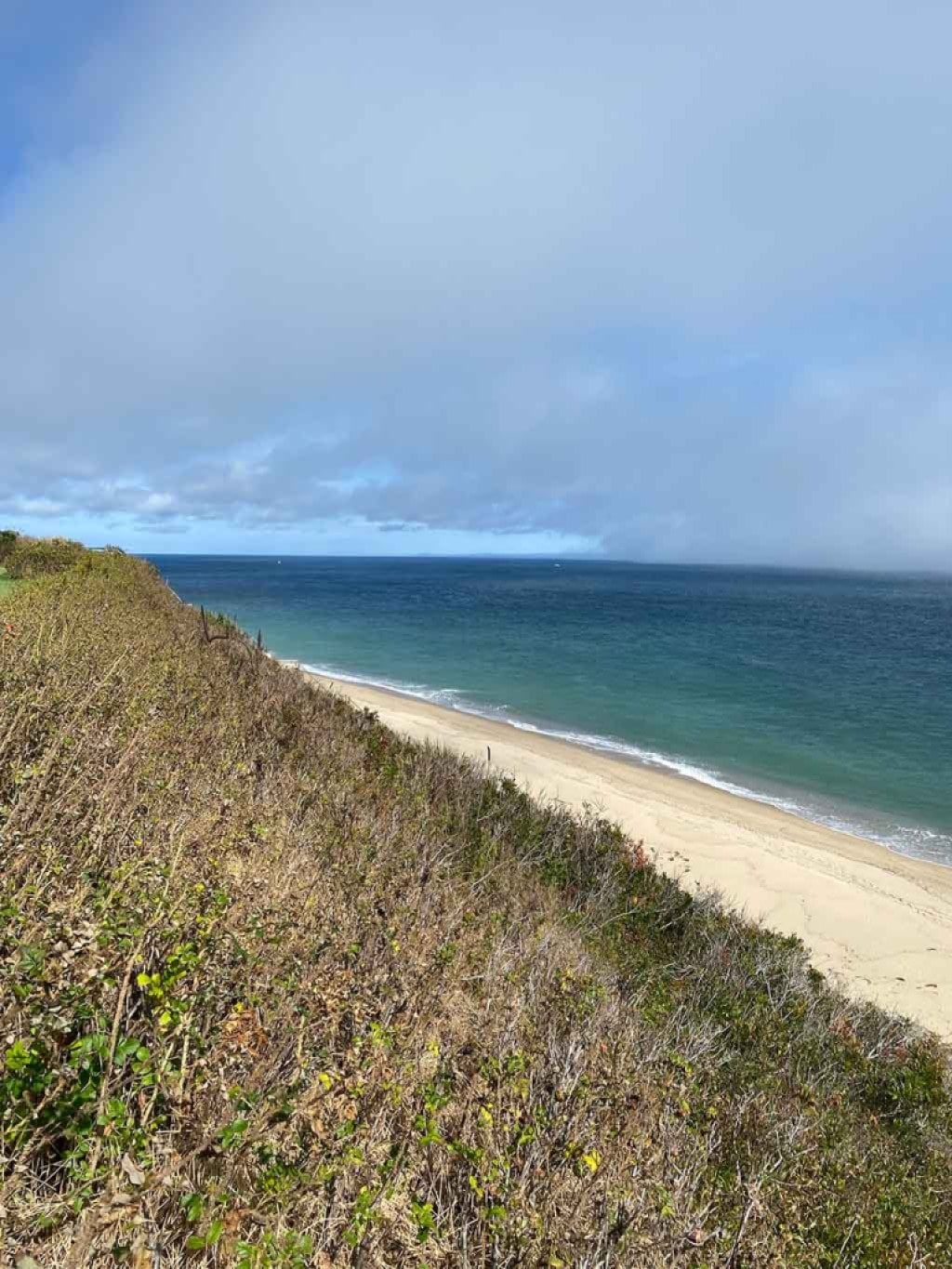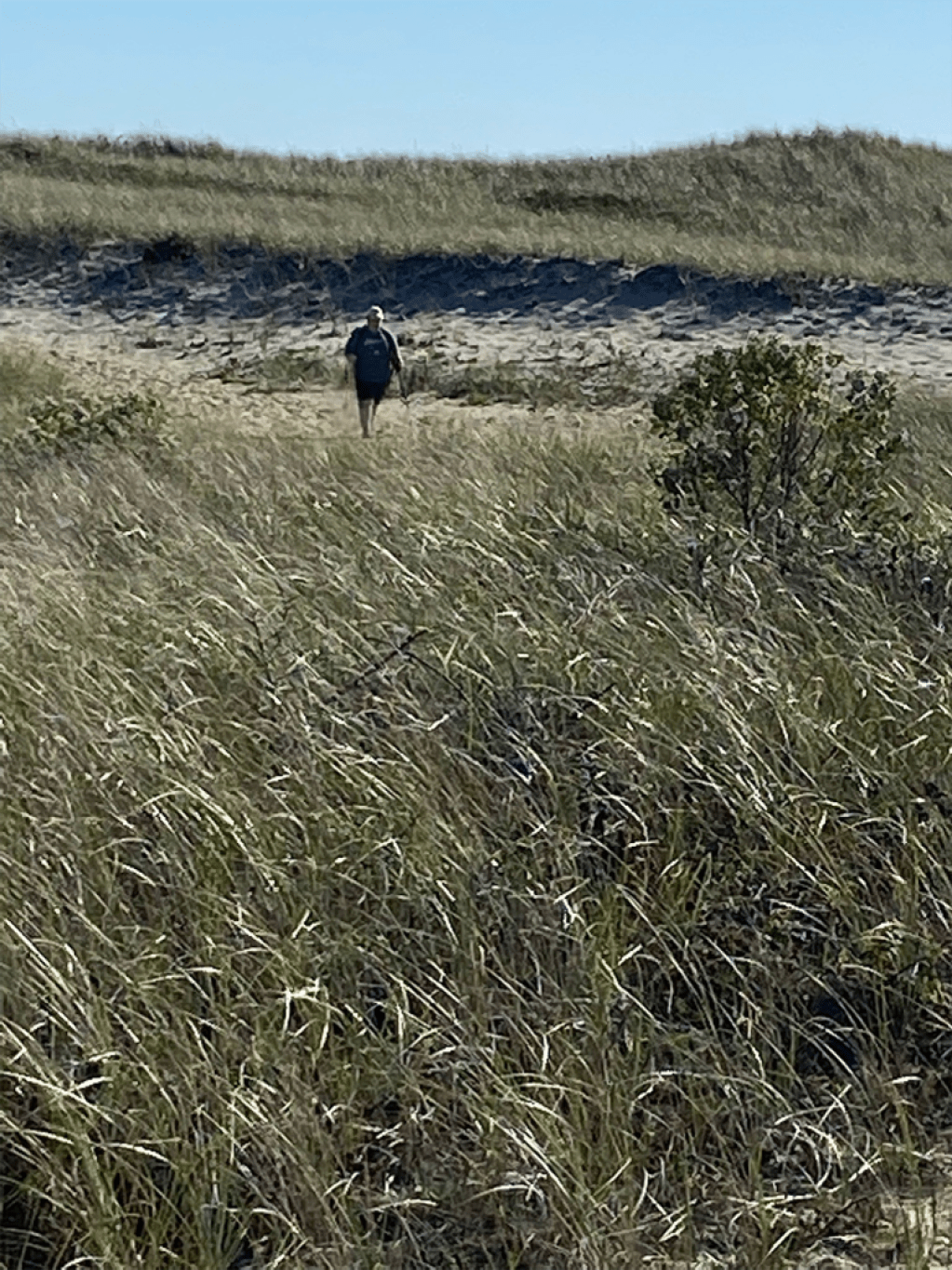I have always loved technology, and since suddenly becoming legally blind over a decade ago, my iPad has kept me connected to the world. There are apps, software and equipment to assist the blind community. When it comes to outdoor adventures, however, my must-have isn’t electronic, digital or even my white cane. It’s a pair of trekking poles.
Let me tell you how they came to be the accessibility tools that changed my life.
I began wearing glasses for nearsightedness in seventh grade, but was always fully sighted. Until one November morning in 2012 when—without warning—I woke up to find my right eye completely blind. The next day, my left eye was sightless too. The medical term for my condition is optic neuropathy. My optic nerves (the part of the eye that carries visual information from the retina to the brain) became inflamed, and when the swelling went down, my optic nerves were severely damaged.
At the time of my vision loss, I experienced other odd symptoms including a swollen tongue and the inability to swallow, muscle weakness in my arms and legs, plus painful nerve firing in my forearms at night. World-class physicians are still trying to determine what caused this. They suspect it’s a genetic issue but none of the extensive testing has confirmed it. My theory is it’s somehow related to the shingles I’d had on the back of my thigh, just 10 days before I woke up blind in my first eye.
I spontaneously regained a little vision a month later, total darkness turning into visual snow—think static on an old television set. Although I’d been given seven days’ worth of high doses of intravenous steroids in the hospital to reduce my optic nerves’ inflammation, I didn’t undergo further treatment after returning home. There’s been no further improvement; I am legally blind.
What you may not know is that blindness is a spectrum. Only 10% to 15% of people who are blind have no sight at all. Technically I am blind, even though I have a little bit of sight. In addition to the snow, I have a blind spot in the middle of my right eye, I don’t see color except certain shades of blue and I have no depth perception.
Legal blindness isn’t a medical term, but a widely used governmental one overseen by the Social Security Association. It’s defined as having 20/200 vision or worse even with corrective lenses and/or a field of view no wider than 20 degrees. For context, 20/200 vision means you’d be able to see at 20 feet away that someone with perfect vision sees at 200 feet.

I’m no longer able to drive, which was just about my most favorite thing to do. Driving wasn’t about logistics for me, just getting from point A to point B. My car was where I cleared my head, it was my freedom. Behind the wheel, I could go anywhere.
Along with my vision loss, I lost my career as a corporate meeting manager. I cannot speak for anyone else, but for me I was no longer able to perform the responsibilities of the position. Among other aspects of the job, there are countless ways in which you have to observe your team, your vendors, your hundreds of attendees and the hotel staff to anticipate everyone’s needs before they do in order to manage all the elements required for a successful event. The work matched my organizational, detail-oriented and people skills and fed my desire to explore the world. It thrilled me to travel throughout the United States and Europe with my team—creating something from nothing, executing what I’d planned for months, then moving on to the next event after the final attendee had departed. I was devastated to have to give it up.

My husband, Keith, and I also travel together; before losing my sight, I’d swam with dolphins and stingrays, gone hot air ballooning three times, and taken a helicopter over the Grand Canyon. After my vision changed, it took a long time for me to even consider traveling again. How could I physically do it? What would it feel like to be somewhere beautiful but unable to see it? Years passed before I was ready to try, starting with local road trips, expanding to a few hours away overnight excursions, finally getting on a plane headed for Germany five years to the day of my vision loss. I slowly began to understand that even though I was unable to see very well, I could still enjoy travel. I was ready to plan my next trip.
Prior to becoming visually impaired I walked outside every day for exercise, in all sorts of weather. I tried it again after waking up blind, using my white mobility cane, but several falls made it feel unwise to continue. Safety is now a concern I never had before.
Then, while planning a trip to Nantucket, I came across information about the Sconset Bluff Walk, a footpath along the east shore’s high bluffs. The narrow and uneven trail isn’t recommended for anyone with ambulatory concerns. I was determined, though, not to miss out on this experience. I asked my contacts in the low-vision world what tools could help me safely complete this challenge, but no one had a solution. After racking my brain, I thought of a walking stick, which turned into the idea of trekking poles. I went to the REI store in Conshohocken, Pennsylvania, where a knowledgeable sales specialist kindly showed me a variety of trekking poles that might work for my trip. He explained that trekking poles improve balance and stability, and that they can also help when navigating around obstacles or on uneven pathways.
Knowing I wanted something lightweight that packs and stores easily, he suggested a pair of adjustable Black Diamond Trail Back Trekking Poles. He demonstrated how to customize their length for my height, allowing my elbows to rest comfortably at a 90° angle, and he suggested rubber tip protectors for durability when I use them on hard surfaces, such as concrete. I even got a pair of baskets as he recommended for walking on sand.
I was cautiously optimistic about the poles: It felt like they were the only chance I had to accomplish this thing that had become incredibly important to me.
My Poles and I Become a Team
After a 30-mile ferry ride from Hyannis, Massachusetts, to Nantucket, Keith and I spent a few days exploring the island before “the big day.” It only took a few steps on the Bluff Walk for me to recognize everything I’d read about the route was true, from a mobility standpoint. In addition, I expected the terrain to be all sand, but it was at times also crushed shells, dirt, grass and a little macadam. We traveled through a tiny cedar forest, where exposed tree roots created dangerous obstacles, but my trekking poles did exactly what I had hoped. Without them, I would have quickly decided not to continue for fear of falling and hurting myself.
As I made my way along the coast, concentrating on every foot and pole placement, I began to silently cry, tears rolling down my cheeks until I tasted their salt on my lips. For once, I didn’t compare with how “fully sighted Kim” would have easily navigated this path—which is the frequent internal dialogue as I go about my life since becoming legally blind. During every inch of the mile-long journey, I knew exactly who I am. I was totally present, wholly aware of how damn lucky I was to be there. To my left, impressive homes, to my right was the Atlantic Ocean’s grand expanse. The immensely blue water created such contrast against the light-colored beach that even with the bluff’s 80-foot height and my sight limitations I could tell it was breathtaking. When we reached the end, I was proud. And I am rarely proud.
Keith and I refer to the Sconset Bluff Walk as my Everest. It’s no exaggeration to say the trekking poles have changed my life.

The following day, our last on Nantucket, we spent a relaxing afternoon at the beach. Traversing sand has been difficult since my vision loss, but when we packed up to head back to our rental house, I told Keith to go ahead and I would meet him there—the monumental first time I’ve done so since becoming legally blind.
Since then, the poles have enabled me to navigate other trails from Maine to Washington state. I’ve used them on sidewalks and brick pavers, and strolling through an outdoor shopping village. They come along when Keith and I lay wreaths on veterans’ graves at Arlington National Cemetery on Wreaths Across America Day each December. Armed with my trekking poles, I’m confident even in wet and snowy conditions. I no longer have to place my hand on Keith’s shoulder, digging my fingernails into his skin to get him to slow down or save me from a fall. The poles allow me to go at my own pace and, if I stumble, I’m able to stabilize myself.
Independence is a priceless commodity. But I purchased an enormous part of mine for less than $100 at REI Co-op.


